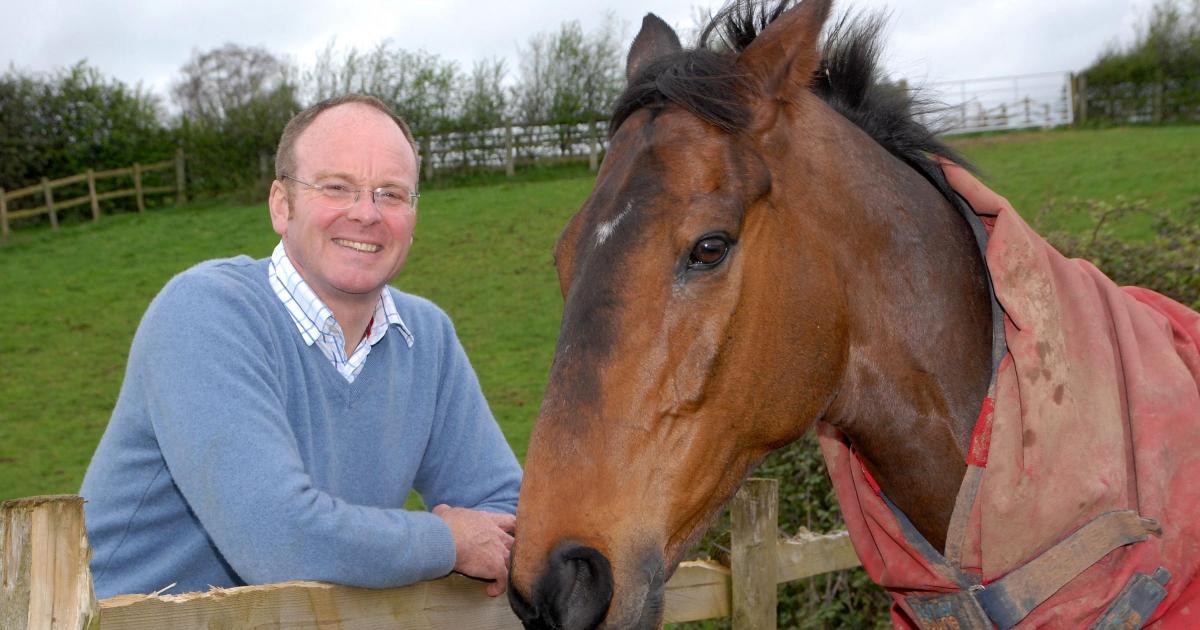We’re now just a little over a week away from the start of the 2025 Grand National Festival and with that in mind, why not register a new betting account with leading bookmaker BetGoodwin and help yourself to a mouthwatering welcome bonus consisting of up to £100 in Free Bet Refunds, terms and conditions apply.

Calls for Change: Grand National-Winning Trainer Urges Limits on Dominant Yards
Richard Newland warns of ‘sport-killing’ trends as powerhouse stables tighten their grip on Aintree and beyond
With the 2025 Randox Grand National fast approaching, the spotlight is not only on the runners and riders set to compete at Aintree on Saturday, 5 April – but also on the state of the race itself.
Amid growing concern over the increasing dominance of a handful of powerful Irish stables, former Grand National-winning trainer Richard Newland has issued a passionate plea for change, arguing that the very spirit of the race is under threat.
Newland, who famously trained Pineau De Re to Grand National glory in 2014, believes the event is at risk of becoming predictable and exclusive. He has called for a cap on the number of runners each trainer can field, suggesting a maximum of three or four horses per yard to prevent a continued stranglehold by racing’s biggest names.
‘Three or Four Big Players Are Killing the Sport’
Newland’s comments come amid mounting frustration among British trainers, owners and racing fans alike. Irish trainers Willie Mullins, Gordon Elliott, and Henry de Bromhead have become near-unstoppable forces at the top level, and their grip on the Grand National in recent years has fuelled concerns about competitiveness and fairness.
“There are three or four big players, and they’re killing the sport,” Newland said.
“It’s not good for racing when the same names dominate everything. We need to spread the opportunities to keep the sport healthy and appealing.”
His suggestion of a maximum runner limit per trainer—potentially capped at three or four entries in major races—would aim to level the playing field and give smaller operations a realistic shot at the biggest prizes in the sport.
The Irish Domination: A Statistical Stronghold
The numbers tell the story. Last year’s Grand National saw six of the first seven finishers trained by Mullins, Elliott, or De Bromhead. All three have lifted the National trophy in recent years:
- Willie Mullins – I Am Maximus (2024)
- Henry de Bromhead – Minella Times (2021)
- Gordon Elliott – Tiger Roll (2018, 2019); Silver Birch (2007)
Their dominance is not limited to Aintree. At this year’s Cheltenham Festival, Irish-trained horses won 20 of the 28 races, with Mullins alone claiming 10 victories, including the Triumph Hurdle with a 100/1 shot from a stable that sent out 11 of the 17 runners in that race.
These trends have raised alarms within the British racing community, with fears that domestic trainers are being squeezed out of the biggest races by the sheer firepower and depth of their Irish counterparts.
Grand National Spirit at Risk?
In addition to stable dominance, the structural changes to the Grand National have also stirred debate. Critics argue that alterations such as lowered fences, a shortened distance, and a reduced field size (now 34 runners instead of 40) have changed the nature of the race.
While these changes were introduced to improve safety and welfare, some, like Newland, worry that they have also eroded the unpredictable, open nature that once made the Grand National such a unique spectacle.
“The National was always the race where the little guy could beat the big boys,” Newland reflected.
“Now it’s becoming just another staying handicap dominated by the same handful of trainers. That’s not what the Grand National should be.”
British Still in the Fight – For Now
Despite the concerns, British trainers remain hopeful of reclaiming the Grand National crown this year. 18 of the 34 guaranteed runners in the 2025 edition are trained in Britain, including second-favourite Iroko, who is trained in Cheshire by Oliver Greenall and Josh Guerriero.
Iroko, owned by JP McManus and set to be ridden by Jonjo O’Neill Jr, is seen as a strong contender to keep the trophy on home soil. Meanwhile, Irish challenger Intense Raffles, trained by Tom Gibney, currently heads the market as the ante-post favourite.
But the broader concern remains: how long can smaller British yards remain competitive, especially when Mullins and Elliott are fielding teams of five or more horses, each with Grade 1 credentials?
A Complex Debate: Rewarding Success or Restricting Opportunity?
While Newland’s proposed cap on entries has attracted support from some quarters, others argue it risks penalising success. After all, if a trainer has earned the right to field multiple contenders, why should they be limited?
Proponents of the current system suggest that owners should be free to place their horses with the best trainers, and that imposing artificial limits would harm the sport’s competitive integrity.
But Newland and his supporters counter that the health of the wider racing ecosystem must take precedence—and that encouraging greater distribution of horses across more yards would help secure the sport’s future.
Can the Grand National Remain Truly Great?
The Grand National has long been the people’s race—a thrilling, chaotic, and magical event where dreams are realised and underdogs triumph. But if Newland’s warnings are heeded, that magic is in danger of fading.
Whether the answer lies in limiting runners per trainer, rebalancing funding, or creating more opportunities for smaller yards, the conversation has begun—and it’s unlikely to fade quietly.
As Aintree prepares to host another blockbuster Grand National, one question lingers louder than the rest:
Will the race’s glorious unpredictability survive the era of super-stables?
